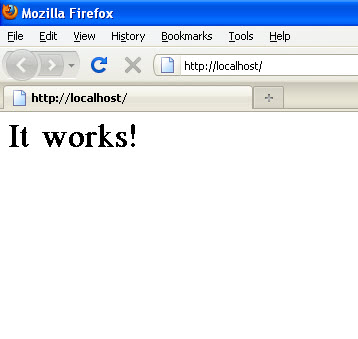Install Php Mysql Apache Phpmyadmin Windows 10
WAMP (Windows, Apache2, MySQL and PHP) is an alternative to LAMP (Linux, Apache2, MySQL and PHP), the opensource stack that allows webmasters to create dynamic and powerful websites. LAMP powers majority of the websites and blogs online today. This blog post is going to show you how to install Apache2 HTTP server, MySQL Database server and PHP on Windows systems (WAMP) using Bitnami opensource stack. You don’t normally see Windows desktop/server running Apache2, MySQL and PHP. However, it’s possible to run these servers and do it efficiently on Windows machines, and this post is going to show you how.

Bitnami WAMP Stack provides a fully-integrated development environment to run WAMP stack. It enables PHP, MySQL, Apache2 and other modules like FastCGI, OpenSSL, phpMyAdmin and almost everything that you’d find the the Linux environment.
For more about Bitnami, please read its WAMP page below. To get started with installing WAMP on Windows, please follow the steps below: Step 1: Download Bitnami WAMP Stack Go to the download page of WAMP and download and run the installation for the last version on your Windows systems. By default, it will be installed on the local C disk in a folder called Bitnami. You can customize the installation as you wish.including naming the installation folders. Step 2: Install Bitnami WAMP Stack After downloading the installer file, run the install and follow the guide below.
Steps to Install PHP 7.0, Apache 2.4.17, & MySQL 5.6 on Ubuntu 15. Hkey_current_user Software Microsoft Windows Nt Currentversion Printer Ports. 10, 15.04 & 14.04 LTS operating systems. Can’t install phpmyadmin 🙁. How to install and setup PHP and MySql in windows 10 and 7 By installing WAMP server on your windows you can run Apache, PHP, and MySql under a single package. Run sample PHP and MySql script.
When the launcher opens, click Next to begin the installation. The Palace Of Illusions Pdf Printer. Next, select to install phpMyAdmin component. This is a great tool to manage MySQL database from your web browser.
Next, select or create a directory to install Bitnami folders and scripts files. You’ll be prompted to create MySQL root user password. Please create and confirm a password and continue. Then uncheck the box to launch wampstack in the cloud. This is not necessary when running WAMP stack locally. When you’re ready, click Next to install.
Wait until the installation is done. When prompted to allow public / private networks, check both and allow access as shown below. When the installation done, launch Bitnami console. The Manage server tab shows running servers.
You can stop/start and restart servers from the tab. The application root folder is where you chose to install Bitnami. Each server folder is stored in there. And below each folder are sub-folders and configurations for each of the servers.
Step 3: Server Configurations All the servers should be running and functioning. To test Apache2 configurations, open your browser and browse to and you shall see Bitnami default Welcome page. To test MySQL, open your browser and browse to and you shall see a logon page for phMyAdmin.
Logon with the root username and password you created during the installation. Finally, to test PHP, create a file in the default root directory for Bitnami WAMP at C: Bitnami wampstack apache2 htdocs Call it phpinfo.php Type the line below into the file and save it to the root directory above. Now open your browser and browse to and you shall see the page below.
This is how to install WAMP stack on Windows systems. Summary: This post shows you how to install Apache2, MySQL and PHP on Windows desktops and servers (WAMP) using Bitnami. Bitnami allows anyone to run a fully-integrated WAMP stack on Windows machine with ease. After installing the servers, you can then begin configuration PHP-based applications like WordPress and other content management systems that depend on PHP. You may also like the post below.